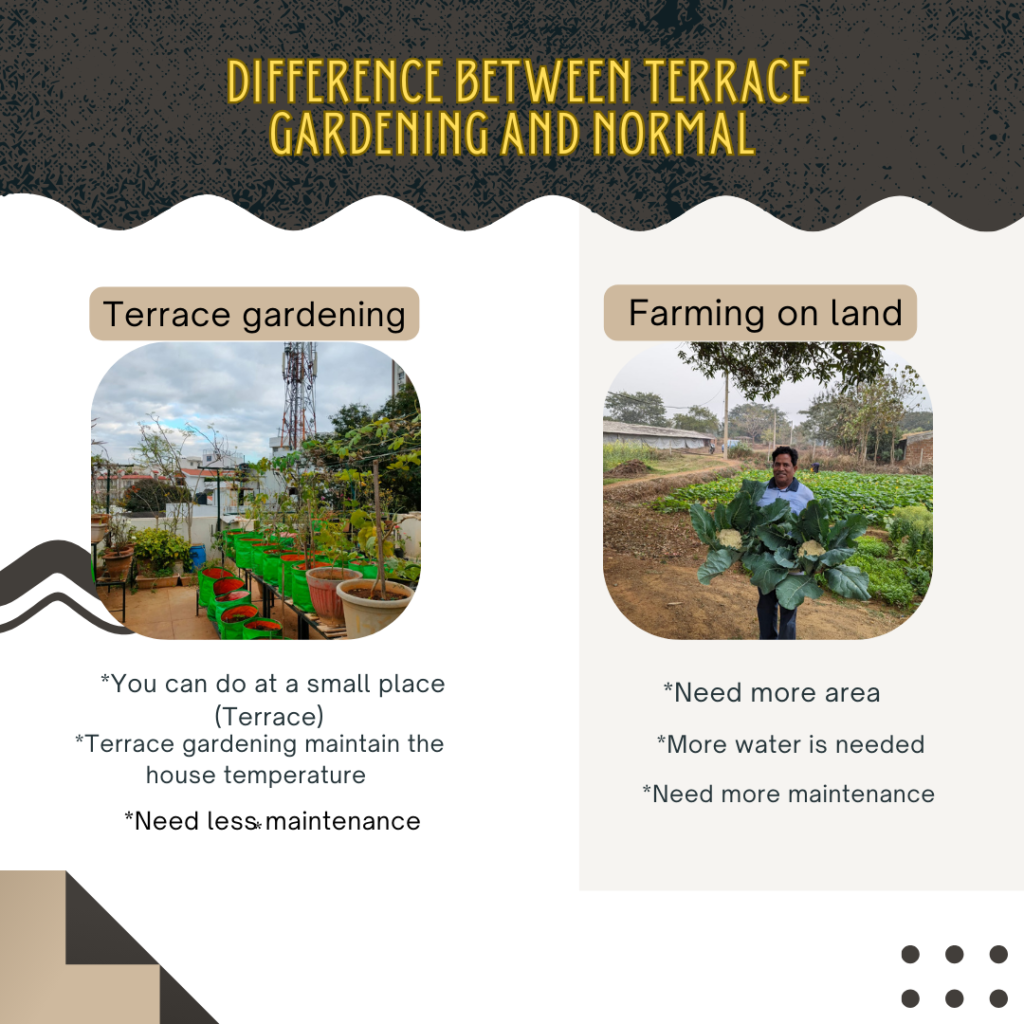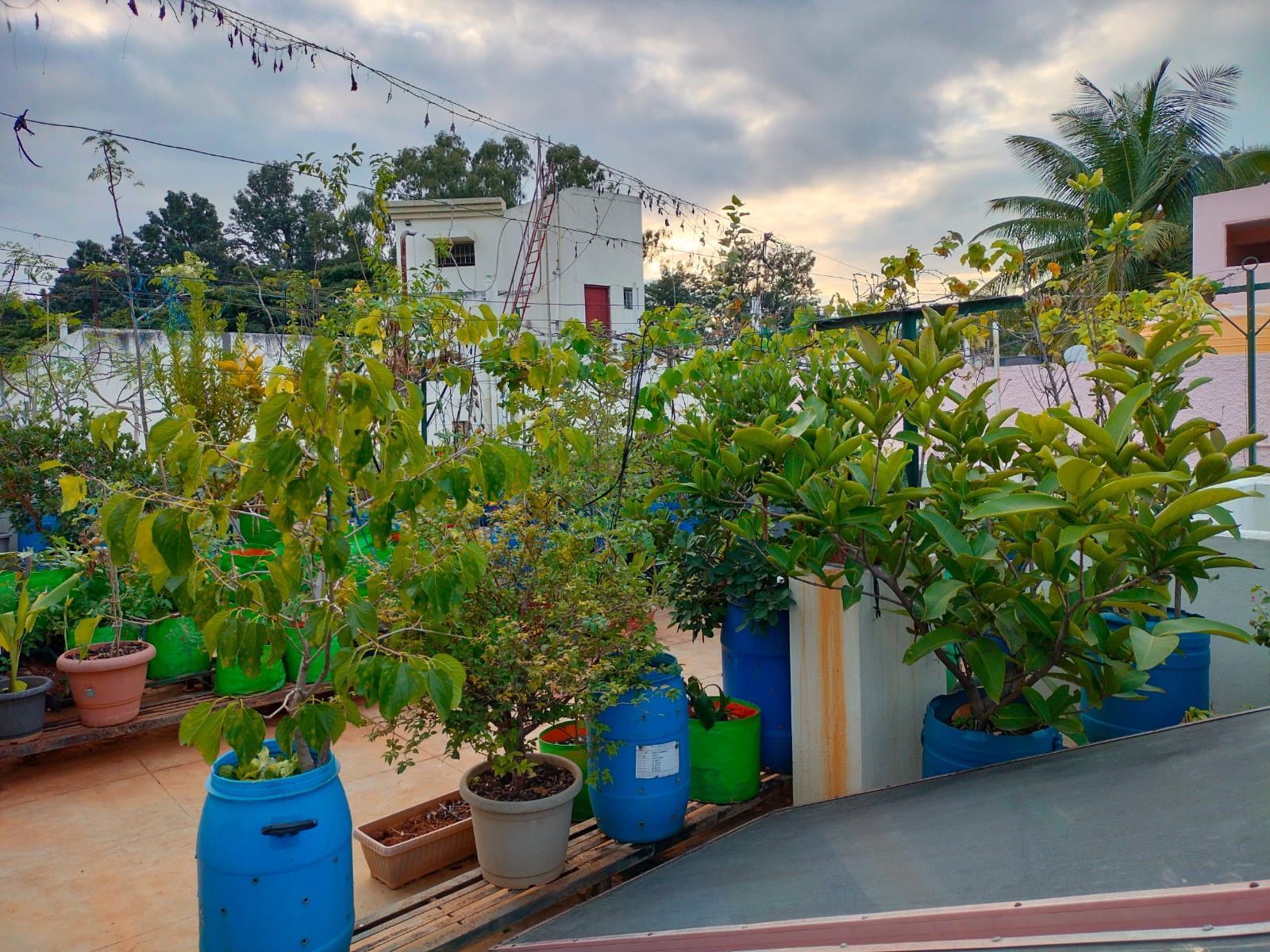Terrace gardeners are moving to private organisation for training.
Tomatoes, brinjal, drumstick, berries and leafy vegetables easily available on your terrace. This was a dream for many residents of Bangalore but, the Kitchen and Terrace Gardening sub-scheme under the Comprehensive Horticulture Development was discontinued in 2020.
Ishwaree, Assistant Horticulture Officer, Director of Horticulture, said, “The scheme was discontinued by the horticulture department in 2020. In this one- day training workshop, urban farmers used to learn the basic skills required for terrace gardening. Terrace farmers used to get a kit worth Rs. 2,000 containing bio mix, plastic trays, pots, seeds and herbal fertilizers. The kit for kitchen gardening was worth Rs. 750 and it contained fewer things than terrace gardening.”
“The number of people registered for the scheme in 2017-2018 were 28,000 and 13,300 in 2018-2019 and in 2019-2020 the numbers were 20,000 approximately. The allocation of the budget for the scheme in 2017-2018 was Rs. five crore and in 2018-2019 it was Rs. two crore,” she added.
Dr. P T Srinivas, Senior Assistant Director, Director of Horticulture, said, “We don’t give a subsidy to urban farmers under the Rashtriya Krishi Vikas Yojana (RKVY). The Karnataka state government sub-scheme Kitchen and Terrace Gardening, was no longer there, as we didn’t get any funds from the state government. But if the public demands it then we will definitely figure it out .”
Private organisations have stepped in to fill the void left by the cancellation of the government scheme.
Dr. Rajesh S., president of ‘Garden City Farmers’, started the urban farming organisation in 2011. He said “Ourorganisation gives training to the around 15,000 to 20,000 terrace gardeners. For the one day training programme the registration fee is Rs. 2,000 and to start a terrace garden, one has to invest around Rs. 8,000.”
“Terrace gardening keeps you happy,” Dr. K.K. Rout, Retd.Dean of, Odisha University of Agriculture and Technology (OUAT) said. Dr. Rout added, “Terrace farming can be practiced in a limited space and nowadays in most of the cities people are adopting urban farming. Plants are to be grown in a limited volume of soil kept in pots. It also requires frequent irrigation and special management. You can grow many vegetables by using organic fertilizer that keeps us healthy. Gardening provides happiness to me.”
Ritu Chaudhary, a terrace gardener, said, “I grow mulberries, cranberries and strawberries because they aid in digestion. I grow vegetables and fruits and distribute them to my friends and relatives.”
In September 2022 to promote urban farming, the United Nations (UN) food and Agriculture Organization said that urban farming can contribute to local food.

A report published by Indian Institute of Human Settlement shows United Nations Development of Economic and Social Affairs (UNDESA) (2018) predicts that by 2050 most of the population will live in urban areas. So, they need extra food and other requirements. The report also states that a growing population will make cities congested. By adopting innovative methods, cities can grow their own food by urban farming.
Cities like Mumbai, Delhi and Bangalore are becoming popular hubs of rooftop gardening due to limited space area provided. According to Indian Institute of Science (IISC) green cover in Bangalore decreased by 26.28% and by 2038 Bangalore it is speculated to be warmer hence terrace gardening can maintain the house temperature during summer season.




